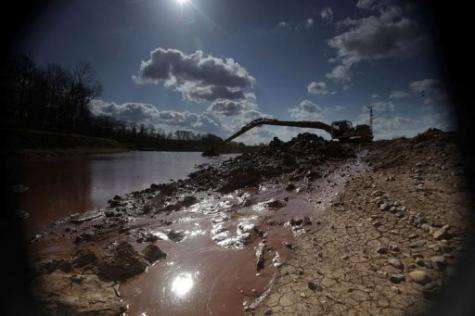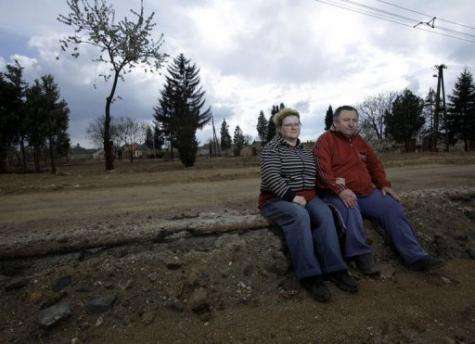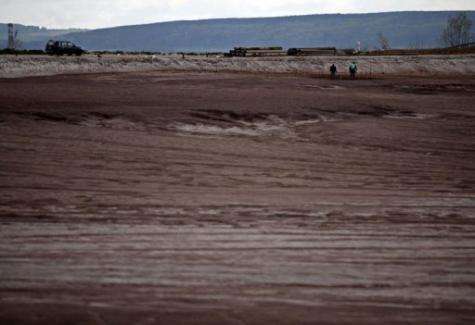Hungary's toxic mud disaster leaves deep scars

When Piroska Nyoma surveys what was left of her street in the village of Devecser in the west of Hungary, her eyes fill with tears.
"I knew my house was gone. But seeing that my neighbours' is gone too, that really hit me hard," says the woman in her fifties.
Where houses once stood, there is now nothing but rubble. The buildings had to be demolished after they were made uninhabitable by a noxious red sludge that swamped the village last October.
Devecser was at the epicentre of Hungary's worst-ever chemical accident, when the retaining walls of a reservoir at a nearby alumina plant burst on October 4, sending 1.1 million cubic metres (38.8 million cubic feet) of poisonous, stinking red-coloured mud across an area of 40 square kilometres (15 square miles).
The toxic spill killed 10 people, injured 150 and left hundreds more without homes or livelihood.
The sludge also wiped out almost all waterlife in rivers and streams in the immediate vicinity and even spread to the Danube.
The villages of Kolontar and Devecser were hardest hit and six months later, houses and trees are still covered in traces of the red mud, etched into the landscape as indelibly as the disaster is into the villagers' minds.

A state of emergency has been in place in the area ever since and the authorities recently decided to extend it until June 30.
Many of the villagers have returned, but Devecser still feels like a ghost town.
The accident "has left an indelible mark on Devecser's economy," complained mayor Tamas Toldi, who was only voted in on October 3, a day before the disaster struck.
Unemployment in the village has soared to 20 percent, with small enterprises such as bakeries forced to close down, he said.
Only one restaurant remains open and at lunchtime, its tables are crowded with relief workers, who are here to pull down the contaminated buildings and clear the rubble.
Out of some 261 houses in the village that were hit by the wave of mud, 102 have already been demolished.
Outside the village, the clean-up work is two-thirds completed, according to the head of the relief operations, Arpad Muhoray.
But even when the relief workers have gone, the scars in the landscape will remain. And it will be a decade before farming in the region can resume, said mayor Toldi.
"Planting crops or foodstuffs has been banned for 10 years," he said.
Instead, plants will be grown to produce bioethanol and other alternative energy sources.
Recently, the World Wildlife Fund said that wildlife was still absent from the area.
But spring has arrived and leaves and buds are appearing on trees whose trunks are still bizarrely coloured red.

The government is footing the bill for the clean-up costs -- put at around 80 million euros ($117 million), including 107 new houses for villagers whose homes had to be pulled down.
But the responsibility for the disaster has yet to be determined.
The government seized control and froze the assets of the firm that owned and operated the reservoir, MAL Hungarian Aluminium Production and Trade Company, just days after the disaster.
In the meantime, 30 lawsuits have been filed against the company.
Experts have also suggested that mistakes were made in the issuing of permits by the disaster management, water and environment protection, construction, and mining authorities.
At the same time, some 1,500 villagers have sent a petition to the government demanding that further health checks be carried out by independent, outside researchers because they had no confidence in government-financed checks, which all gave the area a clean bill of health.
"There may be good things happening around here, what with the new houses and a lake and all. But we still want to know how the mud residue is going to affect our health," said Janos Almasi, a 37-year old bricklayer who acts as spokesman for the village residents.
"I used to love living here but I just don't feel good anymore," Almasi said.
(c) 2011 AFP





















